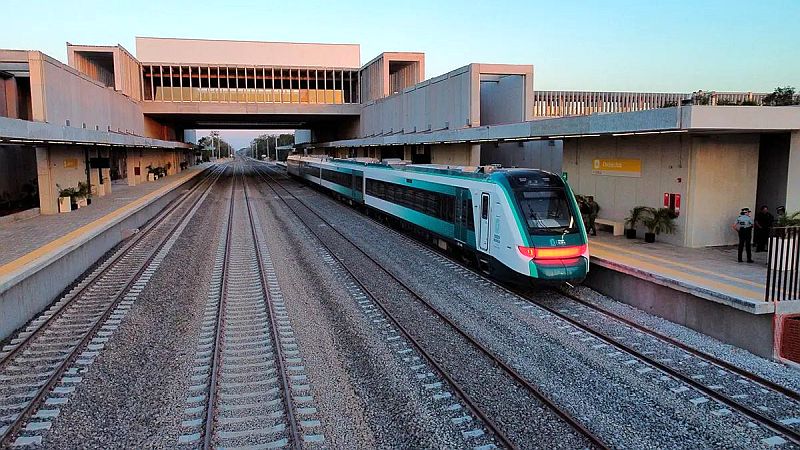
Cancún, Quintana Roo, Mexico – Mexican President Andrés Manuel López Obrador recently led the inauguration ceremony for the Cancún-Playa del Carmen section of the Mayan Train, a monumental step forward for the ambitious railway project aimed at interconnecting Quintana Roo, Chiapas, Campeche, Tabasco, and Yucatán.
This development not only signifies progress in infrastructure but also heralds a new era for tourism in the region, promising improved access to the cultural and natural treasures of the Yucatán Peninsula.
During the ceremony, AMLO highlighted the economic potential of the Mayan Train, emphasizing its role in revitalizing a region that has historically faced neglect in terms of development opportunities. He underscored the modern facilities of the train and outlined plans for future infrastructure, including the construction of the Nichupté bridge, an 8.8 km structure designed to ease traffic congestion and provide an alternative route for workers in the tourist area.
Before commencing the inaugural tour, the President emphasized the cultural significance of the project, noting its potential to offer travelers a comprehensive experience of the region’s rich Mayan heritage alongside its renowned beach destinations. He positioned the Mayan Train as a crucial integration project, boasting extensive tracks and modern amenities designed to enhance the overall tourism experience.
Providing further details on the new section, the director of the Mayan Train company highlighted key features such as electrified double tracks and essential stations like Cancún Airport and Playa del Carmen. The train offers a variety of services catering to different passenger needs, including special fares for seniors and students, starting at 79 pesos, as well as premier class tickets for international tourists priced at $18.50 USD. Tickets are available for purchase online or at station ticket offices.
Gustavo Ricardo Vallejo Suárez, commander of the Felipe Ángeles Group of Engineers of the Secretariat of National Defense (Sedena), elaborated on the completion of the Cancún station, which boasts access roads, parking lots equipped with solar panels generating 30% clean energy, and electric vehicle transportation services starting March 4. Efforts are also underway to establish seamless transportation connections between the train and nearby towns and archaeological sites, further enhancing accessibility and promoting tourism.
Since its inception, the Mayan Train has demonstrated its capacity to serve passengers effectively, transporting 65,000 individuals on 345 trips, covering over 202,000 km with an impressive 84% occupancy rate. With the Cancún station now operational, the Mayan Train aims to serve as a gateway for millions of visitors, connecting them to the region’s diverse attractions, including magical towns, natural reserves, archaeological sites, and pristine beaches.





